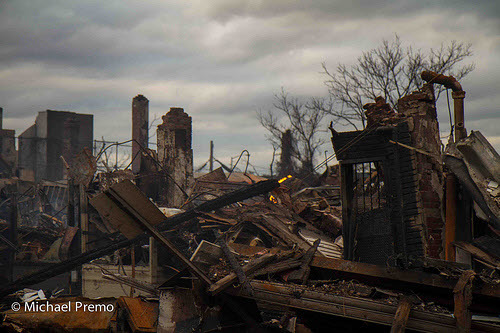Extreme Weather Wasn’t Limited to the United States
The year was exceptionally warm in Canada, where summer 2012 was the warmest on record. For Russia it was the second warmest, just behind summer 2010, when Moscow was smothered by heat and choked with smoke from rampant wildfires. In both years crops suffered, contributing to a jump in food prices. In France, an unusually late and sudden heat wave toward the end of August broke the high-temperature records set during the 2003 heat wave that killed nearly 15,000 people nationwide.
Models predict that with increasing global temperatures such heat waves will come more frequently and with greater ferocity. A 2013 study published in Climatic Change notes that already five times more high-temperature records are being set globally than would otherwise be seen in the absence of climate change. This played out in 2012 in the Middle East and North Africa, when Jordan suffered through heat more than 16 degrees Fahrenheit above the normal maximum in June and July. Morocco set a new all-time high in mid-July. Later that month, Kuwait hit 128.5 degrees Fahrenheit, likely the highest temperature ever recorded in Asia.
The deadliest weather event of 2012 was the category 5 Super Typhoon Bopha, which hit Mindanao in December with torrential rainfall and wind speeds of 160 miles per hour, leading to 1,900 dead or missing and 700,000 homeless. This was the second year in a row a major storm made landfall in the southern Philippines.
China also sustained major weather damage in 2012, with losses from flooding, typhoons, and other severe weather exceeding $29 billion, according to reinsurance firm Aon Benfield. In the spring, most parts of the country were hitting temperatures 9 degrees Fahrenheit higher than the 1961–90 average. In July, a heavy downpour flooded Beijing with more rainfall than in any one day in over 60 years of records. On the other end of the spectrum, drought affected more than 9 million people and damaged 2.5 million acres of crops in Yunnan and Sichuan provinces earlier in the year.
In northeastern Brazil, the first half of 2012 was extraordinarily dry. More than 1,100 towns were affected in the worst drought in 50 years of data—quite the contrast to the heavy rains that hit the upper Amazon Basin in northwestern Brazil and Peru and led to record-high flow in the Amazon River. August 2012 brought extreme rain and flooding to central and northern Argentina, with rainfall in some places double the previous records, based on statistics kept since 1875.
Climate change tends to bring more high temperature records than low ones, but it also can bring surprises like the cold snaps that bookended the year in Eurasia. In late January to mid-February, parts of central Europe did not get above freezing for 20 days straight, twice as long as the February norm. Then at the close of the year, a dip down in the polar jet stream returned frigid weather to Russia, northern and eastern China, and northern Europe. Just a few months after Russia’s second warmest summer, December temperatures plunged to the lowest level in the records kept since 1938. Residential electricity consumption in Moscow soared to an all-time high as the mercury dropped to –22 degrees Fahrenheit. In eastern Siberia, it was –76. More than 100 people died and over 800 were hospitalized from the cold.
Down under, it was a different story. The start of 2012 looked a lot like 2010–11 in Australia—its wettest two-year period in over a century of recordkeeping, which came on the heels of a decade-long epic drought. But then wet turned back to dry, and cool turned very hot. A heat wave that began in late December was unusually long and widespread, with high-temperature records set in every state. In January 2013, the Australian Bureau of Meteorology added a new color to its maps to portray the scorching temperatures, extending the scale that had topped out at 122 degrees Fahrenheit to 129 degrees.
These are some of the early signs of a new, hotter temperature regime. The world’s governments agreed in principle in 2009 to stop global warming from exceeding the “dangerous” 2-degree-Celsius (3.6-degree-Fahrenheit) rise in temperature. But as fossil fuel emissions continue to rise, the chances of staying within that 2-degree window are disappearing. The more the world heats up, the harder it will be to avoid off-the-charts weather catastrophes.
For a plan to stabilize the Earth’s climate, see “Time for Plan B.” Janet Larsen is Director of Research at Earth Policy Institute.
Image: Parisians cool off during August, 2012 heat wave Credit: Gwenaël Piaser via photopin cc


